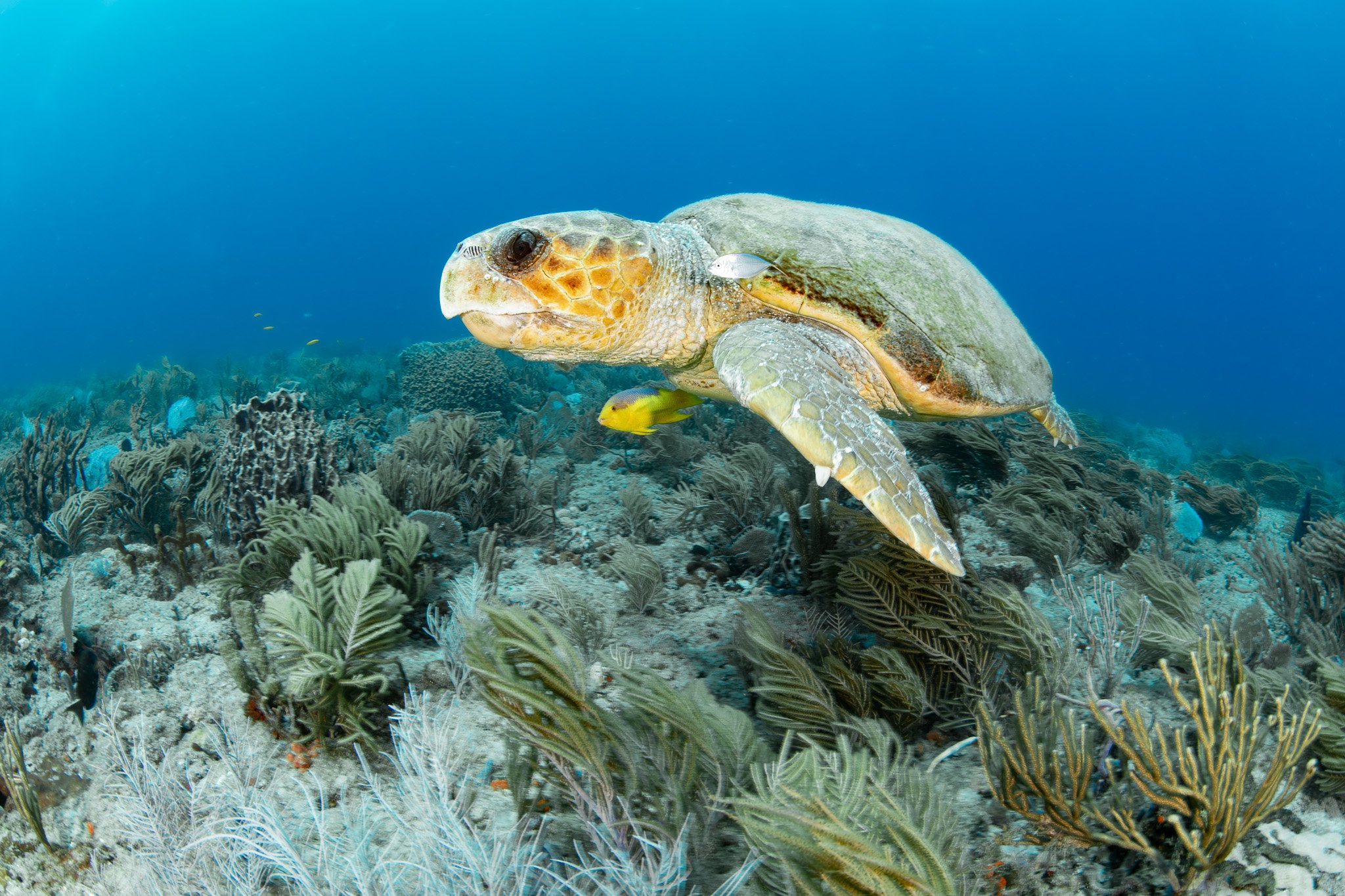Respect the Locals - a Guide to Diving with Loggerheads
Turtle nesting season has reached its peak here in south Florida! On each dive we encounter upwards of at least a dozen loggerhead turtles resting on the reef. While south Florida is home to several species of turtles including green, hawksbill and leatherback, loggerheads make up the vast majority of the population here.
A resting loggerhead allows me to come in close for a shot with my super wide fish eye lens, zoomed all the way out to 8mm.
This is truly one of my favorite times of the year to dive here. Encountering these beauties on the reef is nothing short of magical. When a diver encounters one for the first time, they almost always remark on the size of them once we get back to the boat. The next comment is “they must be so old, did you see all the barnacles on their back?!”
A massive loggerhead glides underneath me while diving in Jupiter, FL.
Most loggerheads live on average 70-80 years, while some scientists claim they can live up to 100 years! They are several feet in length and the largest ones can weight up to 400lbs, though I would say the average ones we encounter here are in the 200 - 300lbs range. Considering their size in combination with their massive block-like heads and powerful jaws they can be slightly intimidating at first. But after spending any time in the water with them you quickly see they are some the most gentle creatures you will ever encounter in the wild.
This loggerhead was so relaxed that it appeared to be smiling at me as I took its photograph. Shot on top of the reef, at dive sire Area 51 in Jupiter, FL.
There are a few tips I can share if you are looking to have some quality encounters with these gentle giants. The first rule, as it should be with all animals you encounter on the reef, is to not chase the turtle. You will never make a true connection with an animal (or get any quality shots) with an animal you are aggressively approaching and chasing down.
This turtle swam right towards me and we drifted along Breakers reef together for several magical moments. If you look closely, you can see it had several friends tagging along with us.
When I spot a loggerhead on the reef, I often observe from a distance and wait to see what the turtle is going to do. Sometimes they turn away from me and dart towards the surface - this is ok, they are going up for a breath and I would never want to get in their way. Other times my patience has rewarded me nicely as they will come and swim right alongside me. This was the case with the image above; I saw the turtle, observed from a distance, then it turned directly towards me and we drifted down the reef together. Once back on the boat another diver commented to me “it was as if you and the turtle were communicating and were completely in sync with one another.” It is an amazing feeling to lock eyes with an animal and make that connection - a feeling I hope each of you can experience one day!
Another happy turtle completely content with my presence. They truly are the sweetest animals! Shot along the backside of Breakers Reef in Palm Beach, a turtle haven during this time of year.
Another pointer I can share with any aspiring turtle-whisperer is to look in the right places. While you will get lucky finding them under the ledge here and there, the majority of the turtles take refuge on the top of the reef. During this time of year I do not dive along the ledge like I normally would, rather I do zig zags on top looking for the backs of their shells. If you are uncomfortable leaving the group to do this, any of our private guides are able to take you and ensure you ascend safely on the other side of the reef.
I was lucky with this turtle I discovered in an area called “The Trench” on Breakers reef, as it was leaving its resting spot to go to the surface. Typically when you encounter a loggerhead under the ledge they are napping head first and you are left with only with a view of their large behind!
Here a sleepy loggerhead takes refuge under the ledge, along with its entourage of grunts.
Again, I cannot stress the importance of approaching the animals calmy and slowly. If you do venture to the top of the reef you will encounter resting loggerheads that may or may not want the pleasure of your company. The slower you approach and the more calm you are, the more likely they are to let you stick around with them. Loggerheads are powerful swimmers and if they want to get away from you it is no problem for them, even against heavy current.
A napping loggerhead that is wanting to be left alone . . .
In conclusion, if you use good dive etiquette around these animals and know the places to look you will surely be rewarded with incredible, life-changing experiences in the water with them. But hurry - now is peak season and before you know it they will be moving on, making way for another gentle giant to come in . . . goliath grouper aggregation will be up next! Stay tuned . . .
Safe Diving,
Grace
This turtle came so close to me, I thought it wanted to take my hand!









